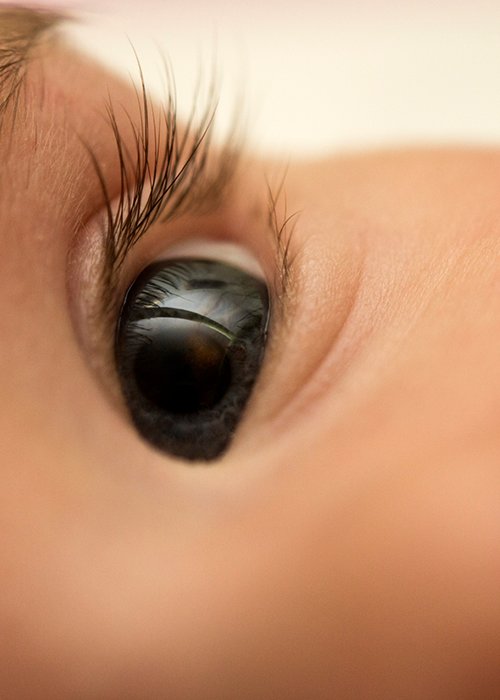Have you ever noticed something strange in photos of yourself as a baby? If your eyes were blue or grey at first, they may have turned darker later on! We’re a bit like chameleons, which change colour thanks to special cells called chromatophores in their skin. The same happens to our eyes: they change colour thanks to melanin. At birth, our eyes are like a blank canvas — there’s no colour yet, because the “paintbrushes” haven’t started their work. These paintbrushes are melanocytes, the cells responsible for producing melanin. Over time, the melanocytes begin painting the canvas: if they use a lot of colour, the eyes become dark; if they use only a little, the eyes stay light (blue or grey). This process generally completes between six and nine months of age, although in some cases it can take up to two years. Parents and grandparents also play an important role in passing on eye colour. If both parents have light-coloured eyes, there’s a good chance their child will too, although it doesn’t always mean they’ll match exactly. In some cases, if one of the grandparents has dark eyes, the newborn might inherit them instead. Have you ever heard of heterochromia? It’s a very rare condition in which a person has eyes of two different colours. This can be caused by genetic factors, or acquired due to an injury, certain medicines or diseases. It’s more common in animals but can also occur in humans. In most cases, it doesn’t cause any health problems, but sometimes it can be associated with genetic syndromes or eye diseases. Heterochromia occurs in only about 1% of the population — in other words, just 3 people in every 1,000.
By Khadiga Gabr, 3A, G. Natta Scientific High School, Milan




